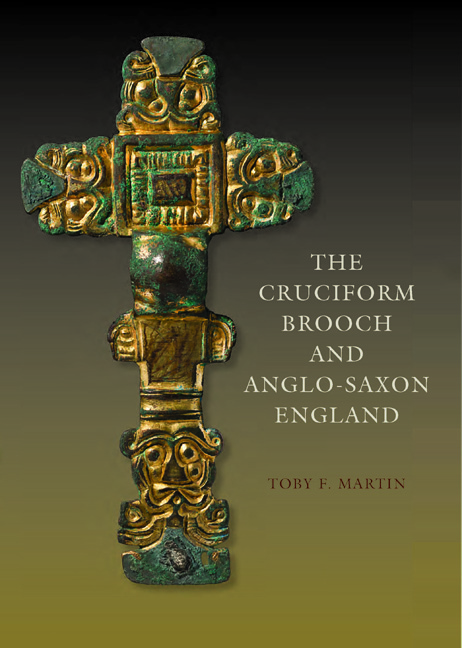Book contents
- Frontmatter
- Dedication
- Contents
- List of Illustrations
- Preface
- Acknowledgements
- 1 The Anglian Brooch par excellence
- 2 A New Typology for Cruciform Brooches
- 3 Building a Chronological Framework
- 4 Cycles of Exchange and Production
- 5 Migrants, Angles and Petty Kings
- 6 Bearers of Tradition
- 7 Cruciform Brooches, Anglo-Saxon England and Beyond
- Appendix 1 Cruciform Brooches by Type
- Appendix 2 Cruciform Brooches by Location
- Appendix 3 A Guide to Fragment Classification
- Bibliography
- Index
- Plate Section
2 - A New Typology for Cruciform Brooches
Published online by Cambridge University Press: 05 May 2015
- Frontmatter
- Dedication
- Contents
- List of Illustrations
- Preface
- Acknowledgements
- 1 The Anglian Brooch par excellence
- 2 A New Typology for Cruciform Brooches
- 3 Building a Chronological Framework
- 4 Cycles of Exchange and Production
- 5 Migrants, Angles and Petty Kings
- 6 Bearers of Tradition
- 7 Cruciform Brooches, Anglo-Saxon England and Beyond
- Appendix 1 Cruciform Brooches by Type
- Appendix 2 Cruciform Brooches by Location
- Appendix 3 A Guide to Fragment Classification
- Bibliography
- Index
- Plate Section
Summary
The earliest cruciform brooches did not already contain the sum components of their future development awaiting stylistic elaboration. Although they were small and plain they did, however, contain many elements that proved remarkably resilient to change and remained part of cruciform brooch design from start to finish. The definitive cruciform brooch arrangement of a head-plate with three knobs and a foot decorated with an animal or human mask is one such feature that persevered. However, additional elements were invented de noo on the cruciform brooch along the way. Furthermore, cruciform brooches exchanged stylistic features with a host of other decorative metalwork, most obviously great square-headed brooches, small long brooches, girdle-hangers and wristclasps, with which they shared numerous decorative elements and presumably were produced in the same workshops, by the same craftspeople. This kind of cross-fertilisation between artefact types is at its most obvious among a small number of hybrid brooches, which sit between the major series and are no more part of one than they are of the other. Hybrids between great square-headed and cruciform brooches, for instance, will be encountered below. However, such true amalgams are very rare. Indeed, their scarcity helps confirm the transferability of our modern categorisations of these types backward into the Anglo-Saxon past. Some aspects, however, really were interchanged freely between the major types. For instance, Salin's Style I, a pan-European repertoire of complex chip-carved animal and human motifs, features on many cruciform brooches. Its presence demonstrates that they were part of a larger stylistic world that extended to most of Europe, linking objects as diverse as brooches, buckles, drinking horns, shield bosses and horse harnesses into a single system of material symbols. Of course, by obtaining and wearing such stylistically related objects, their owners also drew links between each other.
These multiple and aggregated stylistic influences are expressed variously and even independently on the different components of cruciform brooches. Cruciform brooches divide into the five major components illustrated in Figure 4: head-plate knobs (consisting of a top-knob and two side-knobs), head-plates, bows, catch-plates and feet.
- Type
- Chapter
- Information
- The Cruciform Brooch and Anglo-Saxon England , pp. 12 - 89Publisher: Boydell & BrewerPrint publication year: 2015

